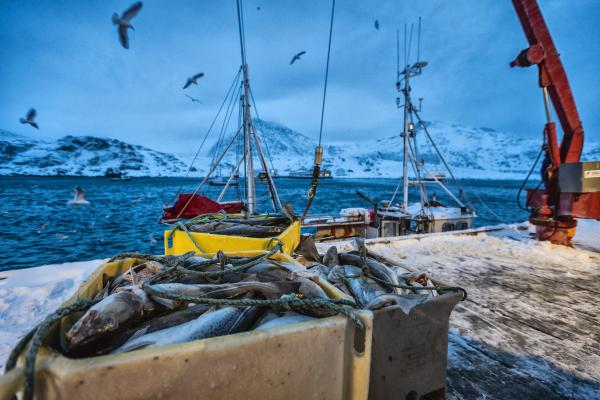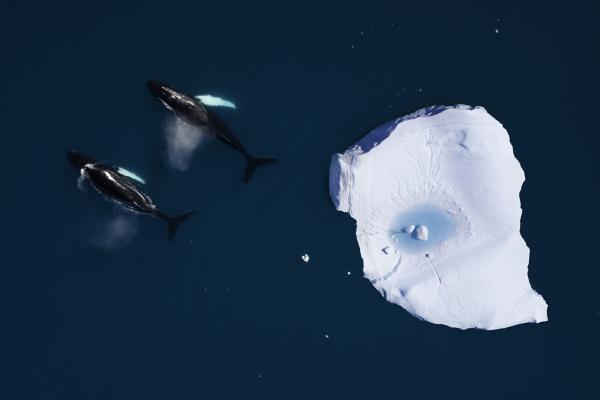Error message
By Yunjin Kim

Former Researcher, Korea Legislation Research Institute
yunkimkr@gmail.com
Posted April 23, 2021
Projected warming in the Arctic will not only result in shrinking glaciers, sea ice, and snow cover but it may also continue to cause negative consequences for the region’s biodiversity, both marine and terrestrial, as well as for the human beings who depend on those resources.
Once these intricate natural systems pass certain tipping points, the damage may be irreparable and there can be no turning back. In such circumstances, the success of future marine cooperation in the Arctic Ocean calls for precautionary action at an international level to minimize the impact of environmental concerns.

Increasing ocean temperatures and shifting marine species are likely to result in new high-latitude fisheries. However, the increasing size and efficiency of the world’s fishing fleets have given rise to various destructive fishing practices such as overfishing and excessive bycatch. To mitigate the negative effects of unregulated fishing activities, governments can adopt conservation and management measures for marine living resources on the basis of a precautionary approach.
According to this approach, states must base their actions and decisions on careful foresight when their activities may be expected to cause environmental damage. Clearly, this is the case in the changing Arctic marine environment, amid warming waters and many scientific uncertainties. Consequently, nations should recognize their common interest in prioritizing prevention of transboundary environmental harm in the Arctic Ocean to avoid the more difficult task of reversing problems after they have occurred.
Cooperating to protect living marine resources in the Central Arctic Ocean
The Central Arctic Ocean—which includes both a high-seas portion and adjacent areas under national jurisdiction—requires such a precautionary approach. Although commercial fishing is not yet taking place in the high-seas portion and is unlikely to become viable in the near future, in 2018 nine countries and the European Union signed the Agreement to Prevent Unregulated High Seas Fisheries in the Central Arctic Ocean (CAOFA) as a precautionary measure.
The agreement calls for precautionary conservation and management measures to ensure the sustainable use of fish stocks as a part of a long-term strategy, and it imposes a moratorium on the start of commercial fishing in the high-seas portion of the Central Arctic Ocean. The CAOFA can be seen as creating a de facto Marine Protected Area (MPA) that limits at least one human activity—commercial fishing—in a clearly defined marine area through a binding international legal mechanism. However, further measures to protect the marine environment should be taken based on adequate scientific evidence. Without such evidence, it will be difficult to create effective new management tools in the Central Arctic Ocean.
Although the CAOFA regulates only one human activity, it also mandates establishment of the Joint Program of Scientific Research and Monitoring, which could contribute to developing other prospective area-based management tools (ABMTs) for the Central Arctic Ocean. The envisioned Biodiversity Beyond National Jurisdiction (BBNJ) Agreement could also create a new means to produce ABMTs using mechanisms that state parties develop in implementing both that agreement and the CAOFA.

Pursuing common interests and responsibilities
The international community shares common interests in the world’s oceans and common responsibilities to conserve and sustainably use marine resources. The consequences of rising global temperatures are forcing states to adopt new approaches and conservation measures to protect marine biodiversity.
Considering the unique nature and geopolitics of the Arctic, discussions on the options for cooperation in the Arctic Ocean should be based on the substantial common ground that all states share. Ultimately, the escalating impacts of climate change, including rapid ecological shifts in the Arctic, require a more comprehensive governance regime. This represents a challenge to which the international community must respond.
The effective implementation of ABMTs in the Central Arctic Ocean ultimately depends on the commitment of national governments. That is, states are responsible for ensuring compliance and enforcement through their national legislation. Moreover, the authority upon which governments take those actions ultimately rests with civil society.
Public awareness and appreciation of the need for Arctic marine conservation measures should be enhanced. Future Arctic marine cooperation will also require respect for the marine management interests and practices of Arctic indigenous peoples. Finally, nongovernmental experts and relevant international organizations must be included to avoid knowledge gaps.
Although commercial fishing is not currently taking place in the high-seas portion of the Central Arctic Ocean, governments nevertheless have a common interest in pursuing the conservation and sustainable use of marine resources there, both within and beyond national jurisdiction. To what extent the Arctic and non-Arctic states will be able to accomplish that—and to overcome the many challenges to Arctic marine cooperation—depends on the political will and the ability of each state to balance national interests and those of the international community.
The views expressed are those of the author and do not necessarily reflect the policies or positions of the East-West Center or of any other organization.
By Yunjin Kim

Former Researcher, Korea Legislation Research Institute
yunkimkr@gmail.com
Posted April 23, 2021
Projected warming in the Arctic will not only result in shrinking glaciers, sea ice, and snow cover but it may also continue to cause negative consequences for the region’s biodiversity, both marine and terrestrial, as well as for the human beings who depend on those resources.
Once these intricate natural systems pass certain tipping points, the damage may be irreparable and there can be no turning back. In such circumstances, the success of future marine cooperation in the Arctic Ocean calls for precautionary action at an international level to minimize the impact of environmental concerns.

Increasing ocean temperatures and shifting marine species are likely to result in new high-latitude fisheries. However, the increasing size and efficiency of the world’s fishing fleets have given rise to various destructive fishing practices such as overfishing and excessive bycatch. To mitigate the negative effects of unregulated fishing activities, governments can adopt conservation and management measures for marine living resources on the basis of a precautionary approach.
According to this approach, states must base their actions and decisions on careful foresight when their activities may be expected to cause environmental damage. Clearly, this is the case in the changing Arctic marine environment, amid warming waters and many scientific uncertainties. Consequently, nations should recognize their common interest in prioritizing prevention of transboundary environmental harm in the Arctic Ocean to avoid the more difficult task of reversing problems after they have occurred.
Cooperating to protect living marine resources in the Central Arctic Ocean
The Central Arctic Ocean—which includes both a high-seas portion and adjacent areas under national jurisdiction—requires such a precautionary approach. Although commercial fishing is not yet taking place in the high-seas portion and is unlikely to become viable in the near future, in 2018 nine countries and the European Union signed the Agreement to Prevent Unregulated High Seas Fisheries in the Central Arctic Ocean (CAOFA) as a precautionary measure.
The agreement calls for precautionary conservation and management measures to ensure the sustainable use of fish stocks as a part of a long-term strategy, and it imposes a moratorium on the start of commercial fishing in the high-seas portion of the Central Arctic Ocean. The CAOFA can be seen as creating a de facto Marine Protected Area (MPA) that limits at least one human activity—commercial fishing—in a clearly defined marine area through a binding international legal mechanism. However, further measures to protect the marine environment should be taken based on adequate scientific evidence. Without such evidence, it will be difficult to create effective new management tools in the Central Arctic Ocean.
Although the CAOFA regulates only one human activity, it also mandates establishment of the Joint Program of Scientific Research and Monitoring, which could contribute to developing other prospective area-based management tools (ABMTs) for the Central Arctic Ocean. The envisioned Biodiversity Beyond National Jurisdiction (BBNJ) Agreement could also create a new means to produce ABMTs using mechanisms that state parties develop in implementing both that agreement and the CAOFA.

Pursuing common interests and responsibilities
The international community shares common interests in the world’s oceans and common responsibilities to conserve and sustainably use marine resources. The consequences of rising global temperatures are forcing states to adopt new approaches and conservation measures to protect marine biodiversity.
Considering the unique nature and geopolitics of the Arctic, discussions on the options for cooperation in the Arctic Ocean should be based on the substantial common ground that all states share. Ultimately, the escalating impacts of climate change, including rapid ecological shifts in the Arctic, require a more comprehensive governance regime. This represents a challenge to which the international community must respond.
The effective implementation of ABMTs in the Central Arctic Ocean ultimately depends on the commitment of national governments. That is, states are responsible for ensuring compliance and enforcement through their national legislation. Moreover, the authority upon which governments take those actions ultimately rests with civil society.
Public awareness and appreciation of the need for Arctic marine conservation measures should be enhanced. Future Arctic marine cooperation will also require respect for the marine management interests and practices of Arctic indigenous peoples. Finally, nongovernmental experts and relevant international organizations must be included to avoid knowledge gaps.
Although commercial fishing is not currently taking place in the high-seas portion of the Central Arctic Ocean, governments nevertheless have a common interest in pursuing the conservation and sustainable use of marine resources there, both within and beyond national jurisdiction. To what extent the Arctic and non-Arctic states will be able to accomplish that—and to overcome the many challenges to Arctic marine cooperation—depends on the political will and the ability of each state to balance national interests and those of the international community.
The views expressed are those of the author and do not necessarily reflect the policies or positions of the East-West Center or of any other organization.

